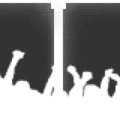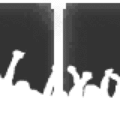Difference between revisions of "Transparency"
(image and formatting fixes) |
|||
| Line 32: | Line 32: | ||
The x-rays on this light-table use subtractive transparency to make things under them darker, the way real x-rays do. The subtractive method isn't used all that often, so if you need it you should ask your programmer(s) if they can add it as a specific feature of the engine. | The x-rays on this light-table use subtractive transparency to make things under them darker, the way real x-rays do. The subtractive method isn't used all that often, so if you need it you should ask your programmer(s) if they can add it as a specific feature of the engine. | ||
| − | See [[ | + | See [[Subtractive Color Model]]. |
---- | ---- | ||
[[Category:Glossary]] | [[Category:Glossary]] | ||
Revision as of 04:51, 26 November 2014
Additive Transparency
The flames on this burning bed are using additive transparency to keep the colors "hot."
See additive color model.
Alpha Transparency
Alpha Bit Depths
A closeup of the 8bit (256 colors) alpha channel. This is the highest bit depth used for alpha channels, because you can get a full range of grays with 256 colors. If we had a higher bit depth like 16bit (65535 colors), you would see the alpha looking a little bit smoother, but because texture filtering is so common now, it ends up softening your 8bit alpha anyway, and it looks fine.
Subtractive Transparency
The x-rays on this light-table use subtractive transparency to make things under them darker, the way real x-rays do. The subtractive method isn't used all that often, so if you need it you should ask your programmer(s) if they can add it as a specific feature of the engine.








